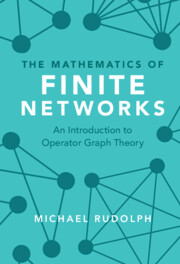7 - Transforming Graphs
from Part II - Applications
Published online by Cambridge University Press: 30 April 2022
Summary
Navigating across sometimes treacherous waters, we demonstrated in the previous chapter the construction and utilisation of a small selection of graph observables for measuring various properties of finite random graphs. Together with the generation of operator representations for arbitrary graph models, we should now be in possession of a sufficiently equipped toolset with which to further explore and characterise on rigorous algebraical grounds the plethora of graph models in the applied graph-theoretical literature. However, our adventurous journey would not be complete without touching upon another crucial aspect exhibited by many real-world networks - their dynamic nature. In this final chapter, we will explore with one hopefully light-hearted, playful example - the game of chess - how to formulate such dynamical aspects in our operator graph-theoretical language. As we will witness here, the construction of graphs that describe possible moves of chess pieces at any position during a game, and the transformations that lead to changes of such positional chess graphs, pose a formidable challenge for not only computational algorithms.
Information
- Type
- Chapter
- Information
- The Mathematics of Finite NetworksAn Introduction to Operator Graph Theory, pp. 291 - 324Publisher: Cambridge University PressPrint publication year: 2022
